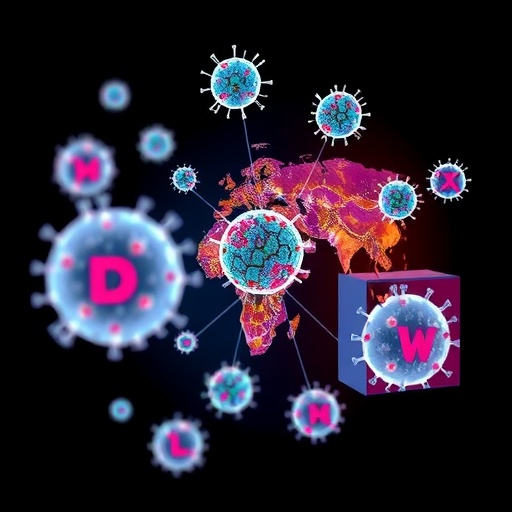In an intriguing exploration of genetic anomalies, researchers have recently shed light on Culler-Jones syndrome, a rare genetic condition that emerges from mutations in the GLI2 gene. This case report, authored by Yuan, X., Chu, S., and Gu, W., provides compelling evidence of how such genetic mutations can lead to debilitating conditions like hearing loss. The significance of this case study not only lies in its contribution to the medical literature but also in the urgent need for awareness about genetic syndromes that may be overlooked due to their rarity.
Culler-Jones syndrome is characterized by a series of phenotypic anomalies. Patients often exhibit a range of symptoms that can vary widely in severity, with deafness being one of the more prominent features. The presented case study highlights a novel mutation in the GLI2 gene, which is pivotal in regulating gene expression during embryonic development. This mutation exemplifies the intricate relationship between genetic changes and phenotypic outcomes, providing a real-world context to the theories underlying genetic syndromes.
The GLI2 gene encodes a transcription factor involved in the Hedgehog signaling pathway, crucial for proper cellular communication during embryogenesis. Mutations in this gene have been associated with a spectrum of developmental disorders, and the connection to otological manifestations in Culler-Jones syndrome underscores the gene’s multifunctionality. The identification of this novel mutation broadens the understanding of GLI2’s role in auditory development and its implications for other developmental features.
Ear anomalies are not merely anatomical variations; they are often indicative of broader genetic concerns. The case of the patient reported in this study reveals the intersection of deafness with other symptoms characteristic of Culler-Jones syndrome. This includes facial dysmorphisms and skeletal abnormalities, which interconnect in a web of development influenced by the GLI2 gene. As researchers delve deeper into these correlations, the emphasis on an integrated view of syndromic presentations becomes increasingly vital.
One cannot overlook the societal implications of identifying such genetic syndromes. While Culler-Jones syndrome is rare, the growing body of research indicates a need for heightened awareness among healthcare professionals. This report not only highlights the medical intricacies involved but also calls for educational initiatives aimed at recognizing and diagnosing similar syndromes promptly. Early diagnosis can lead to better management strategies, significantly improving the quality of life for affected individuals.
The potential for genetic counseling as a result of increased awareness cannot be overstated. Families impacted by the implications of Culler-Jones syndrome may face challenges and uncertainty regarding the hereditary nature of the condition. Understanding that a specific mutation in the GLI2 gene can lead to visible symptoms offers hope for families seeking answers. Genetic counseling can provide them with essential information regarding risks, inheritance patterns, and reproductive options, which are crucial for informed decision-making.
The case study also emphasizes the importance of collaborative research in the field of genetics. By compiling case reports and data, researchers can build a more comprehensive picture of the manifestations and implications of specific genetic mutations. Publishing findings in reputable platforms such as BMC Pediatrics not only disseminates information efficiently but also encourages further research and collaboration across disciplines. This collaborative spirit is necessary to unravel the complexities surrounding rare genetic disorders.
Another notable aspect of the study is its methodological rigor. Detailed documentation of clinical findings and genetic analyses provides a blueprint for future research endeavors. By employing cutting-edge genomic sequencing techniques, the findings confirm the mutation’s uniqueness while dissecting its functional impact. Such rigorous scientific inquiry ensures that findings are robust and replicable, which is vital for the advancement of the field.
As more cases of Culler-Jones syndrome and similar conditions are documented, it becomes evident that genetic mutations like those in the GLI2 gene are not isolated occurrences. The patterns observed may indicate a wider genetic landscape where various mutations collectively contribute to specific phenotypes. Therefore, engaging in large-scale genetic studies is crucial to identifying common pathways and better understanding the genetic underpinnings of such syndromes.
There is a compelling narrative growing around the relationship between genetics and phenotypic expression. As researchers continue to unravel the complexities intertwined in various genetic disorders, the role of environmental factors may also emerge. While the focus often lies on genetic predispositions, it is essential to recognize the interplay between genes and environment in shaping individual outcomes. Future studies that take this integrative approach could uncover new insights into not only genetic syndromes but also broader health issues faced by society.
In conclusion, the publication of this case report on Culler-Jones syndrome represents a vital contribution to the field of genetics, illuminating the intricacies of how rare mutations can manifest in diverse ways. As the research landscape continues to evolve, the findings serve as a clarion call for collaboration among researchers, clinicians, and educators. With increased awareness, timely diagnosis can pave the way for effective interventions, ultimately enhancing the lives of those affected by genetic syndromes. It’s a reminder that within the complexities of our DNA lies the potential for profound understanding and the hope for better outcomes for future generations.
This research adds yet another layer to the complex tapestry of human genetics and reminds us of the ongoing need for exploration in the realms of genetic mutations and their far-reaching implications.
Subject of Research: Genetic mutations and their impact on Culler-Jones syndrome, specifically concerning GLI2 gene mutations and associated phenotypic expressions.
Article Title: A case report of Culler-Jones syndrome with deafness carrying a novel mutation in GLI2 gene.
Article References:
Yuan, X., Chu, S. & Gu, W. A case report of Culler-Jones syndrome with deafness carrying a novel mutation in GLI2 gene. BMC Pediatr 25, 878 (2025). https://doi.org/10.1186/s12887-025-06135-0
Image Credits: AI Generated
DOI:
Keywords: Culler-Jones syndrome, GLI2 gene, genetic mutations, hearing loss, phenotypic anomalies, genetic counseling, rare diseases, genetic disorders, embryonic development, Hedgehog signaling pathway.
Tags: case study in geneticsCuller-Jones syndromedevelopmental disorders researchembryonic development and mutationsgenetic syndromes awarenessGLI2 gene mutationhearing loss and geneticsHedgehog signaling pathwaynovel genetic findingsphenotypic anomalies in geneticsrare genetic conditionstranscription factors in development





